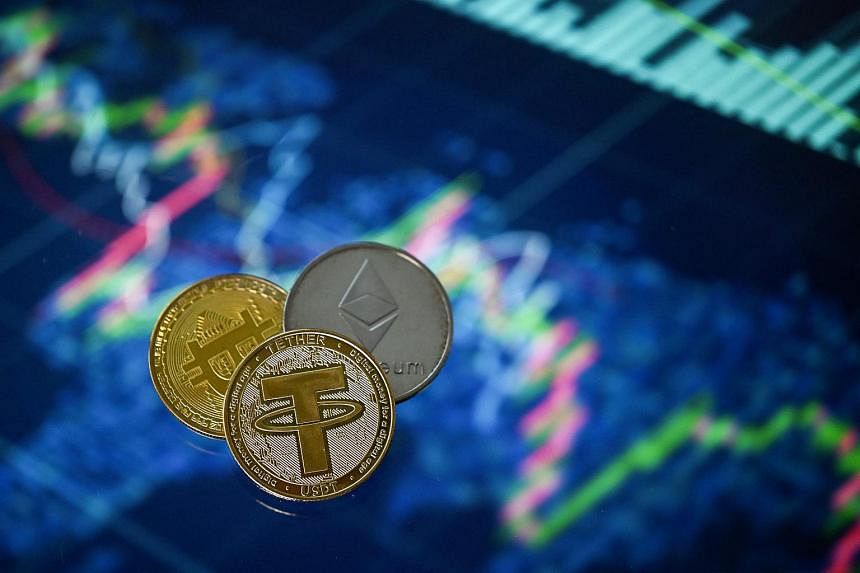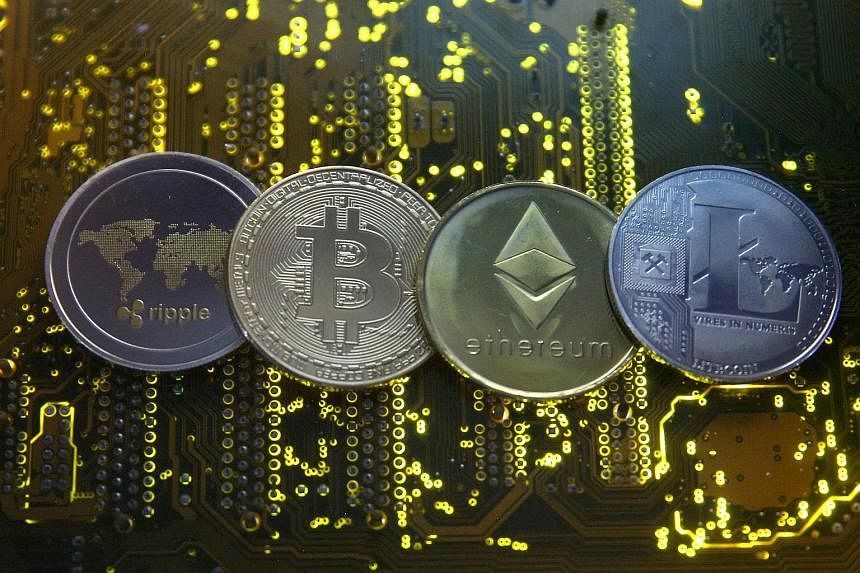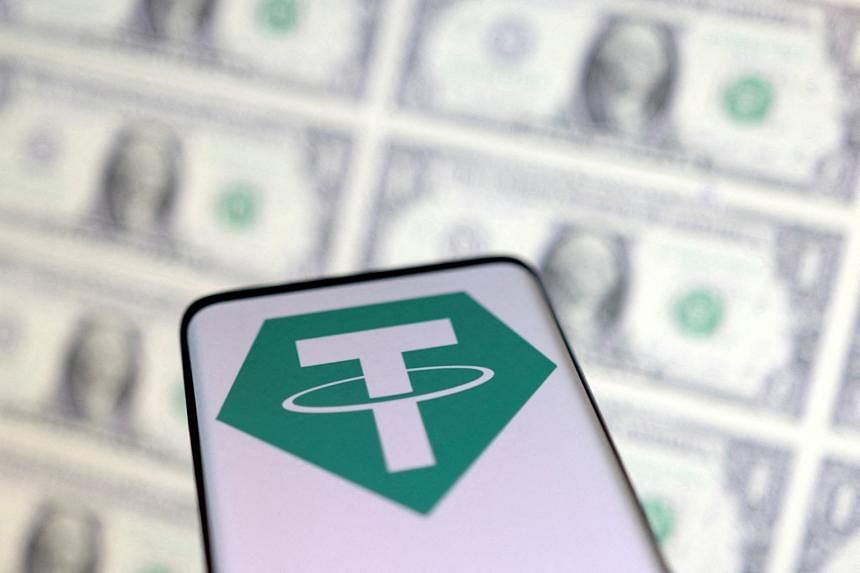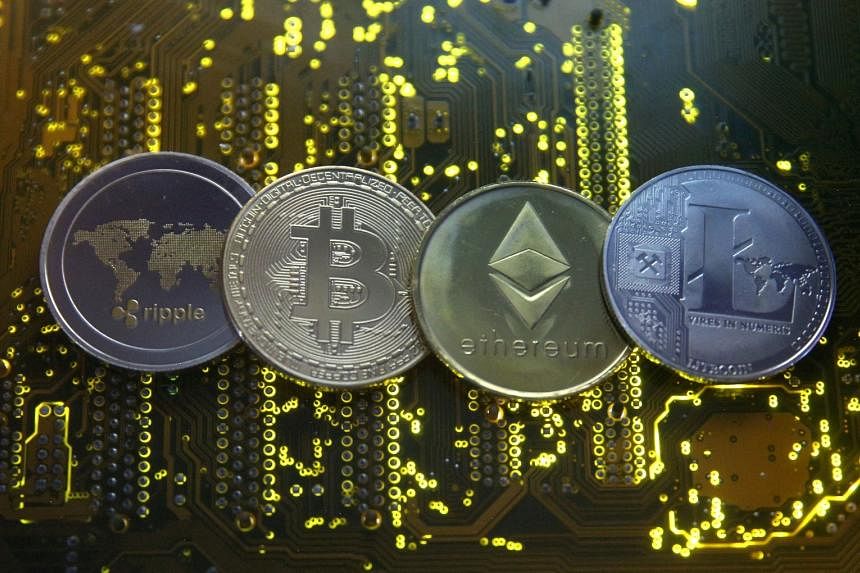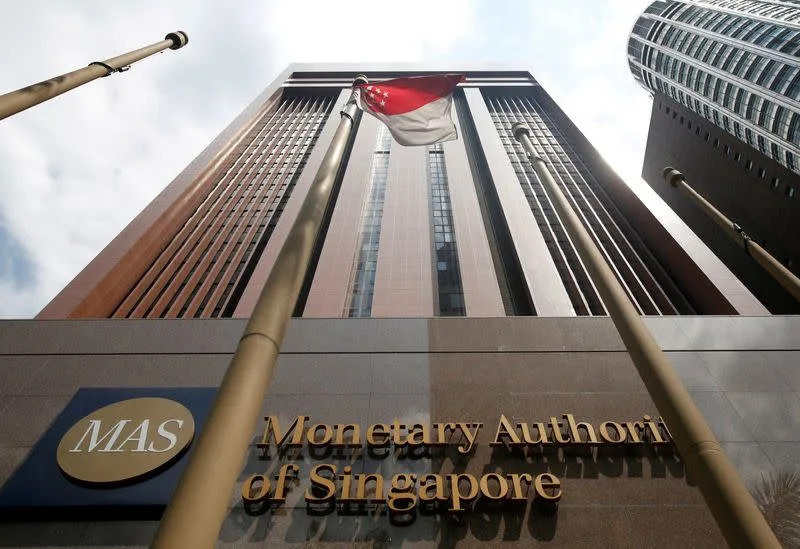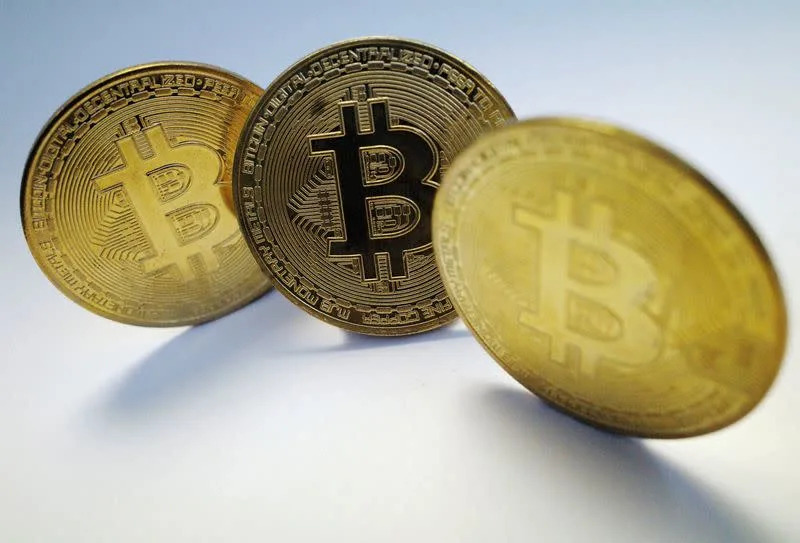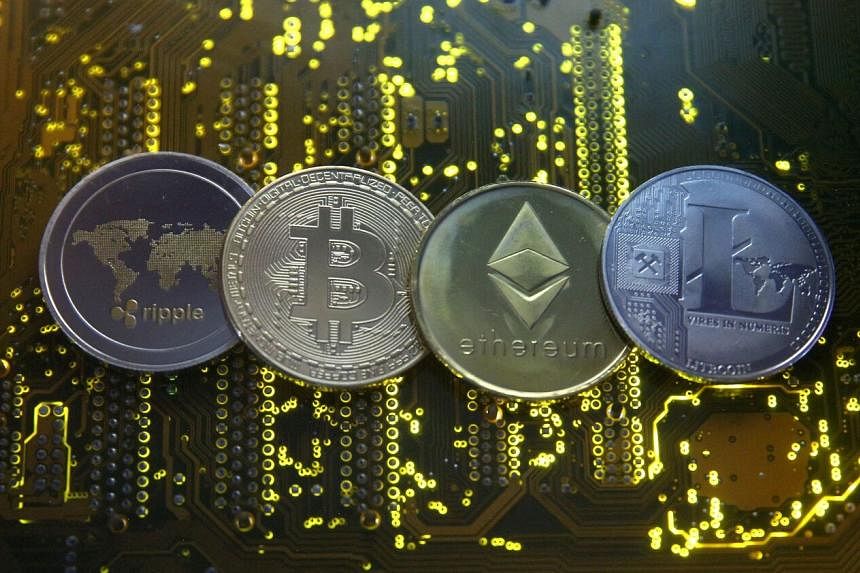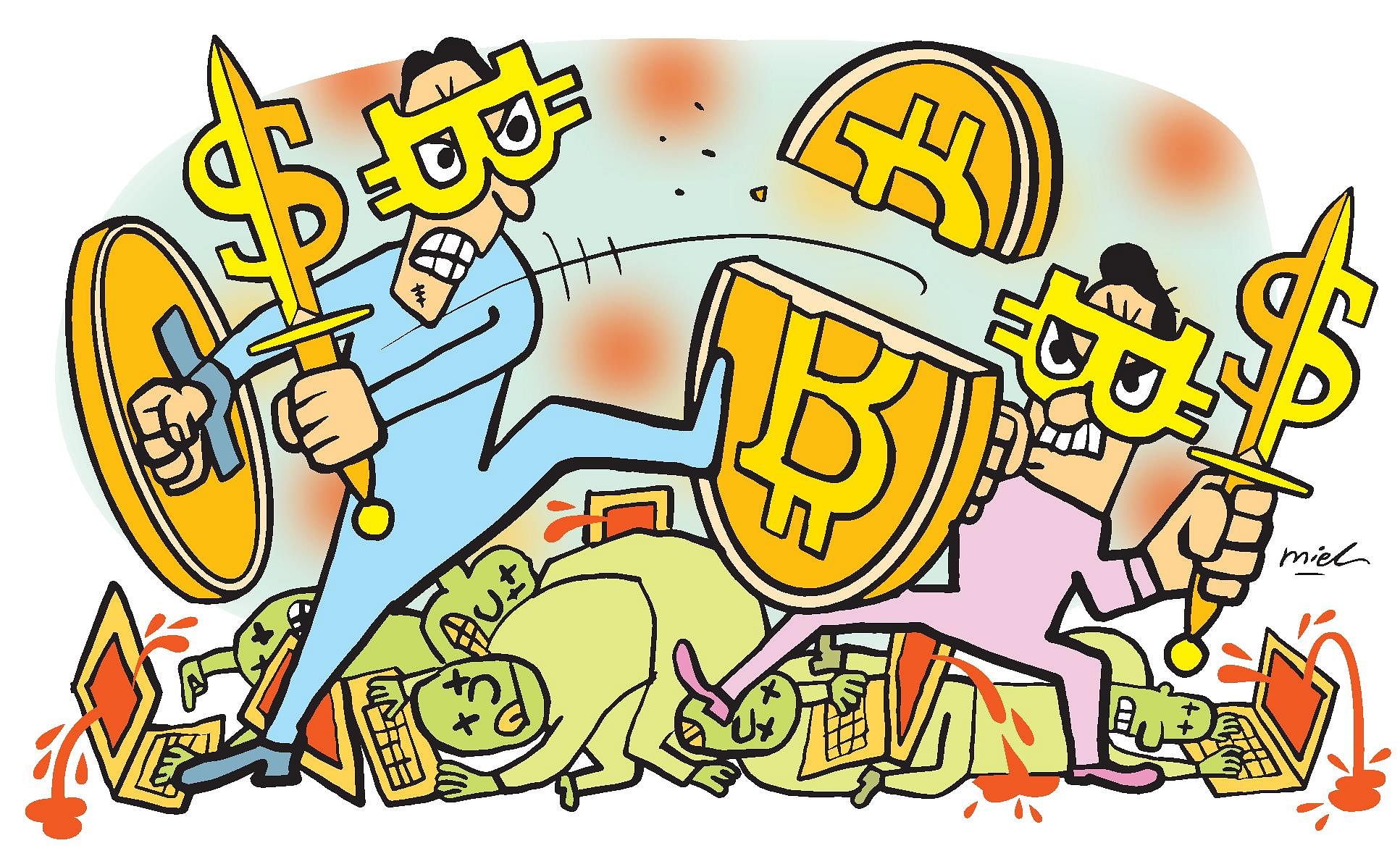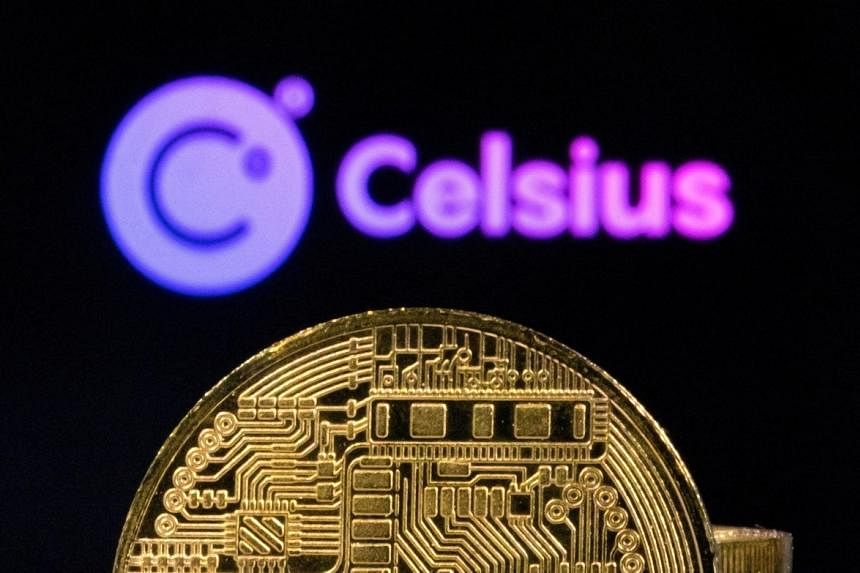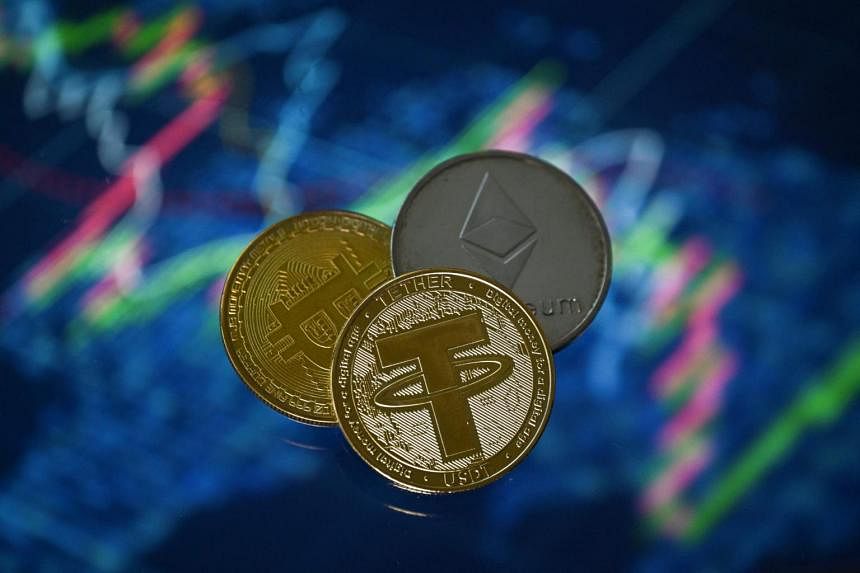‘They couldn’t even scream any more. They were just sobbing’: the amateur investors ruined by the crypto crash
‘You fall into this La-La land of thinking: I’m going to make it.’ Illustration: Scott Balmer/The Guardian
Fuelled by hype and hysteria, the market in bitcoin and other cryptocurrencies went from an obscure niche to a $3tn industry. Then the house of cards collapsed
Sirin Kale
Tue 12 Jul 2022 06.00 BST
In the gloom of an 18th-century drawing room at the private rehab clinic
Castle Craig, near Peebles in the Scottish Borders, Roy, a 29-year-old victim of
the global cryptocurrency crash, tells me his story. It is a dazzling summer’s day, but here the mood is sombre. Roy shifts uncomfortably in his chair as he begins.
It all started in February 2021, with a radio advert for Dogecoin, a cryptocurrency
promoted by Elon Musk, the founder of Tesla. Intrigued, Roy started Googling, eventually using his credit card to make an initial investment of €2,500 (£2,200) in a range of cryptocurrencies. The value of Roy’s portfolio climbed to €8,000, then €100,000, then €525,000. Roy had entered the market during an adrenalised bull run, meaning an extended period of price growth. A combination of Covid stimulus packages, low interest rates and an unprecedented level of enthusiasm for cryptocurrency among furloughed workers meant the bull was careering out of sight.
Roy started spending all his time watching YouTube videos and speaking to other cryptocurrency enthusiasts in private groups on the messaging app Telegram. He had been treated for cocaine and alcohol addiction twice, but by 2021 he was sober and working as an addiction counsellor, although he was on sick leave as a result of panic attacks brought on by childhood trauma. He soon relapsed. By day, he checked his cryptocurrency wallets every 10 seconds; by night, he set alarms to go off on the hour. He began fantasising about a life free of financial constraints, in which he would never have to work. “I thought I was on top of the world,” Roy says. “Nobody could tell me anything. Money would fix every single problem I faced from now on.”
I always thought the next project would bring me back up again and I’d cash out before it crashed
Roy
Then the cryptocurrency market crashed. The price of bitcoin fell
from £42,000 in May 2021 to £23,000 by the end of June. It rallied to an all-time high of £48,000 in November, before diving to £26,000 at the end of January. Since then, it has been in near-continuous freefall. At the time of writing, bitcoin is hovering at £17,000. “It felt like I had lost my life,” says Roy. “Because I had invested everything in crypto. I had built every dream I had on there. So, when it came crashing down, my whole life came crashing down.”
Desperate, Roy made a string of bad bets. The value of his portfolio dwindled to €20,000, then €3,000. “It got so out of control because I saw all my chances to live a better life fading away,” he says. “So I became really desperate and eventually just completely isolated. I didn’t want to see anybody, because I thought I was a failure.”
Most mornings, he would wake up shaking from alcohol withdrawal, order booze online and spend the day drinking and taking drugs. He developed stomach ulcers. “You can’t explain the pain,” he says. “I would drink and puke and drink and puke and drink and hope to keep it in, so the pain would go away. I felt like dying.”
In May, jobless and broke, Roy checked into Castle Craig, one of the only centres in the world that treats cryptocurrency addiction. (He lost his job when he relapsed; his rehab fees are covered by medical insurance.) His cryptocurrency portfolio is worth about €300. Now, amid the incongruous grandeur of a Scottish stately home, he is attempting to rebuild his life – and quieten the tormenting thought that he should have pulled out his money when he had the chance.
“It’s heartbreaking,” Roy says, softly. “I hate myself for the fact that I didn’t take it out.”
They gather on Telegram to let out howls of grief and short, sharp shrieks of pain. “Eeeeeeee!” yowls a young woman. “Waahahahah,” roars a man in a deep baritone. A third person wails like a baby. These are victims of the cryptocurrency bloodbath, 3,315 of whom have assembled in a “Bear Market Screaming Therapy Group” group to vent their anguish. “I had a few people lamenting and crying,” says the group’s founder, a 30-year-old cryptocurrency investor who gives only his first name, Giulio. “I decided not to ban them. I felt bad. They weren’t even able to scream any more. They were just sobbing.”
The cryptocurrency industry is in roiling waters. Scarcely a day seems to pass without a wave crashing across the sector. “The rollercoaster has turned and taken crypto holders on a downward spiral,” says Susannah Streeter, an analyst at Hargreaves Lansdown. “Many people have been caused serious financial pain.”
Last month, major coins including bitcoin and ethereum dropped by more than one-third in just a week. While bitcoin has tumbled significantly on several occasions, this bear run – meaning a period of declining prices – feels different. The industry is larger and more interconnected than ever, with retail and institutional investors jostling for space in what was, until last year, a $3tn market. (The crash has
wiped $2tn off the market’s value.)
In May,
the “stablecoin” terra/luna collapsed, prompting the Guardian’s UK technology editor, Alex Hern, to ask whether this was the industry’s
“Lehman Brothers moment”. It had been marketed as a safe bet, due to the fact it was pegged to the US dollar, and promised
returns of up to 20%.
‘I thought I’d be able to retire early. But it’s all gone down the drain.’ Illustration: Scott Balmer/The Guardian
The carnage prompted further sell-offs. This month, the cryptocurrency lending platform Celsius Network
halted withdrawals for its 1.7 million customers, citing “extreme market conditions”. A day later, Coinbase, one of the largest cryptocurrency exchanges, announced that it was sacking 18% of its workforce. At the end of June, the hedge fund Three Arrows Capital, which was heavily leveraged in cryptocurrency and related businesses,
went into liquidation.
Everywhere is panic and turmoil – and things look likely to get worse. The casualties range from ordinary retail investors to multimillionaire “whales” and celebrities – in May, the British rapper KSI tweeted that he had
lost almost $3m in the terra/luna crash. There have been at least two reported suicides,
in the UK and Taiwan; on the Reddit community for terra/luna investors, users share details of suicide hotlines.
Advocates argue that this is but a cryptocurrency winter, as seen in 2013 and 2018. Prices will rebound; spring will turn to summer; the bear becomes the bull. They lampoon so-called “paper-hands” investors, meaning those who abscond at the first sign of trouble, and urge each other to Hodl (“hold on for dear life”) and “buy the dip” (purchase coins when prices are low). Others are less certain. Will the frost ever thaw?
There are eight stages of crypto-crash grief.
Shock. “I couldn’t eat or sleep for two nights,” says Alla Driksne, a 34-year-old chef from London. “I got sick from the stress.” She has lost her life savings – a six-figure sum – in the Celsius freeze.
Denial. “I always thought the next project would bring me back up again and I’d cash out before it crashed,” says Roy. “In the next cycle, I’m going to try. In the next cycle, I’m going to do it again.” A part of him still believes this is possible.
Anger. Alex Koh, a 41-year-old engineer and personal finance YouTuber from Glasgow, directs his towards Do Kwon, the South Korean entrepreneur who founded terra/luna. Koh says he lost enough to buy a four-bedroom house in London. Kwon has been
accused of fraud by five investors based in South Korea; he is being investigated there by a financial crimes unit
and in the US by the Securities and Exchange Commission.
The rollercoaster has taken crypto holders on a downward spiral. Many people have been caused serious financial pain
Susannah Streeter
Bargaining. Vahid, a 31-year-old from London, has
used Twitter to plead for his money with Alex Mashinsky, the founder of Celsius. Vahid’s life savings, more than £50,000 in cryptocurrency, is locked in his Celsius account. Vahid had planned to use the money to start a business or buy a house. For support, he spends his time on conference calls with other Celsius victims; I listen in to one. “I know anything short of getting your native token [initial investment] back is unacceptable,” says one investor, with desperation in his voice. “But would you rather get back 10%, or 20%, or 34%, you know? Now, I’m hoping it’s not a complete loss.”
Depression. “I thought I’d be able to retire early,” says Koh. “But it’s all gone down the drain. I’ve never cried so much in my life.”
Acceptance and hope. “I worked my ass off doing 16-hour days for six years to earn this money,” says Driksne. “This is hard-earned money. That’s what hurts the most. I lost six years of hard work. But I am trying to stay positive. I’ll make it back again.”
Shame. Vahid hasn’t told anyone he has lost his life savings. “I don’t want people turning around to me, saying: you should have taken your money out last year,” he says. I ask him if he is embarrassed. “Of course,” he responds.
Processing. “I hope that I can show that I am willing to learn and accept my mistakes,” says Koh. “If I rebound from this, perhaps I can be an inspiration to people elsewhere around the world – or my kids, at least.”
The industry’s enthusiasts and sceptics agree on one thing: they saw this coming. Perhaps they didn’t predict the precise contours of the crash, or the fact that so many seemingly reputable companies would flame out, but there was a sense that the cryptocurrency bull would run out of road. The sector was too hot, too loaded with bad-faith actors, scammers, credulous investors and amateurs feigning expertise in Telegram groups, YouTube videos and Twitter threads. When internet jokes such as PooCoin and Dogecoin surged in popularity, it ought to have been apparent that a market correction was coming. Such stupidity cannot be sustained for long.
“Was it surprising?” says Dr Larisa Yarovaya, an associate professor of finance at the University of Southampton. “I think it was quite predictable.” The Bank of England has repeatedly told cryptocurrency investors to be prepared to
lose all their money. Investors bought bitcoin as a speculative punt in 2020 and 2021 because interest rates were low and many had spare cash due to lockdowns and economic stimulus packages. But when interest rates and inflation began to rise, fuelled by Covid‑affected supply chains and the war in Ukraine, institutional investors preferred to put their money into safer assets.
“There is a fear factor rippling through financial markets about how out of control inflation is and whether central banks will be able to bring it under control,” says Hargreaves Lansdown’s Streeter. “When people feel richer, they are more likely to spend on riskier assets, like crypto. But in times of uncertainty, investors flee to safer havens.”
‘I worked my ass off doing 16-hour days for six years to earn this money’ … Alla Driksne. Photograph: @allasyummyfood
The mania around bitcoin and other cryptocurrencies was fuelled by a social media hype machine unprecedented in the history of financial markets. Investors touted new coins that were amassing huge returns, hung off the tweets of crypto-influencers and spoke in impenetrable jargon. “Demand for bitcoin related purely to the level of interest in this new technology, and that interest was manipulated by the companies that offered different cryptocurrencies and exchanges and startups,” Yarovaya says. “All of this happened on social media, meaning that investors didn’t even know whether there was genuine interest in crypto, or lots of Twitter bots encouraging people to buy. The system wasn’t transparent.”
Koh got swept up in the social media frenzy. “You fall into this dream, this La-La land of thinking: I’m going to make it. It was like a whole trend, a pop culture. Now, sitting back, I think we got brainwashed.” Koh’s wife has a master’s degree in business administration and she urged him to be cautious. “She said: ‘Alex, it sounds like a Ponzi scheme … this is social media marketing to rope you in; take your liquidity and go.’” But he didn’t listen. “They call it ‘being an alpha’,” he says. “You have to be on Twitter, and follow the right people, and be in the right Discord channel. You listen to the right chatrooms. It makes you feel so special.”
At one point, says Koh, he convinced himself that terra/luna was such a great project that he “was ready to sell my house, my car, put everything in”. Now, he wouldn’t invest even £10 in cryptocurrencies. “It’s like a drug,” Koh says. “You’ve been there. You got high. And then you’re in rehab. I’m not going to go back in again.”
His greatest regret is that he encouraged others to invest in the terra/luna project. His YouTube channel, which has 17,600 subscribers, repeatedly championed the cryptocurrency. “I do feel responsible,” Koh says. “I don’t know what to do. How much I apologise. I haven’t got much hate, because I think I’ve been quite transparent in how much I’ve lost. I am not saying people forgive, though. I don’t forgive myself for it.”
Has the great cryptocurrency revolution simply evaporated?
Nassim Nicholas Taleb was once open-minded about the potential of cryptocurrencies. The economics professor originated the theory of the “black swan”: a hard-to-predict but seismic event, such as the 2008 financial crash, that is often rationalised after the fact with the benefit of hindsight. In 2018, Taleb wrote an essay describing bitcoin as “an excellent idea” and a possible “insurance policy against an Orwellian future”.
Last year, Taleb
revised his position in a paper that described bitcoin’s value as “zero”. “This is the first time we’ve seen a financial bubble coupled with religious, cult‑like behaviour and an investment strategy not seen before in history,” he says. Many demur – and Taleb could yet be proved wrong. A common defence of bitcoin and other cryptocurrencies is that the underlying technology, blockchain, has functions not yet discovered.
Taleb says: “I would tell people who are still holding bitcoin: ask your grandmother if the idea makes sense. And if it doesn’t make sense to her, it doesn’t make sense … get out. Do something productive with your life.”
‘If I rebound from this, perhaps I can be an inspiration to people’ … Alex Koh. Photograph: YouTube
But few in the cryptocurrency world are heeding the esteemed professor’s advice. Driksne plans to invest in cryptocurrency in the future, despite her six-figure loss, although she would steer clear of platforms such as Celsius. “I firmly believe crypto is the future,” agrees Vahid. “It’s not a Ponzi scheme or a scam.”
He compares cryptocurrency to the early days of Amazon and Google. When I point out that they were growing businesses, unlike bitcoin, Vahid says: “But bitcoin replaces gold.
Bitcoin is digital gold.” Taleb is exasperated by this line of reasoning. “If you buy gold and store it in your basement or wear it on your neck, there is no chance of that gold turning to lead over any foreseeable horizon,” says Taleb. “Metals don’t need maintenance. Bitcoin requires continuous maintenance.”
It may be that future economists view the cryptocurrency boom of the early 2020s as a mass Dunning-Kruger event, fuelled by social media and facilitated by technology; an era in which amateurs took financial advice from fellow amateurs and bet the house on speculative investments. “Admitting that you know nothing just tells you that you’re lucky,” says Roy. “And my ego couldn’t handle that. I didn’t want to be lucky. I wanted to be someone who knew what they were doing. I’m smart, right? Tell me I’m smart, please? That’s how it goes. The whole community reinforced themselves, and each other.”
When Taleb published his 2021 paper, he received so much abuse that he had to lock his Twitter account. “I could not believe how psychopathic bitcoin people were,” says Taleb. Watching his tormentors have their portfolios wiped out has provoked a degree of schadenfreude, he admits. But he has compassion for the inexperienced investors who got swept up in the hype. “Lots of these kids lost everything they have,” he says. “You feel empathy for them.” The scammers, who urged others to invest in doomed projects while they were secretly cashing out? “They must be punished,” Taleb says.
But it seems likely that, just as in the 2008 financial crash, the bad-faith actors who exacerbated this meltdown will walk away unscathed. What’s more, many of the investors who bought into the cryptocurrency boom did so to claw back security after a decade racked by recession and uncertainty. Koh was one of those. “I was lucky to keep my job, but I was really angry at the suits, at the bankers, at the high‑bonus people,” he says. “The whole space of crypto was about giving normal people the option to gain the upper edge in society financially. It was a beacon of hope. We could ride the next big thing. But that beacon of hope has been put out for now. The trust has been broken. Yet again, sitting here, in decade number two, the bankers have won again.”
Future generations may look back at this boom as a period of mania, when money multiplied like bacteria and a collective delusion gripped financial markets. It may seem unfathomable, but it shouldn’t. After all, who doesn’t want to be rich?
Some names have been changed